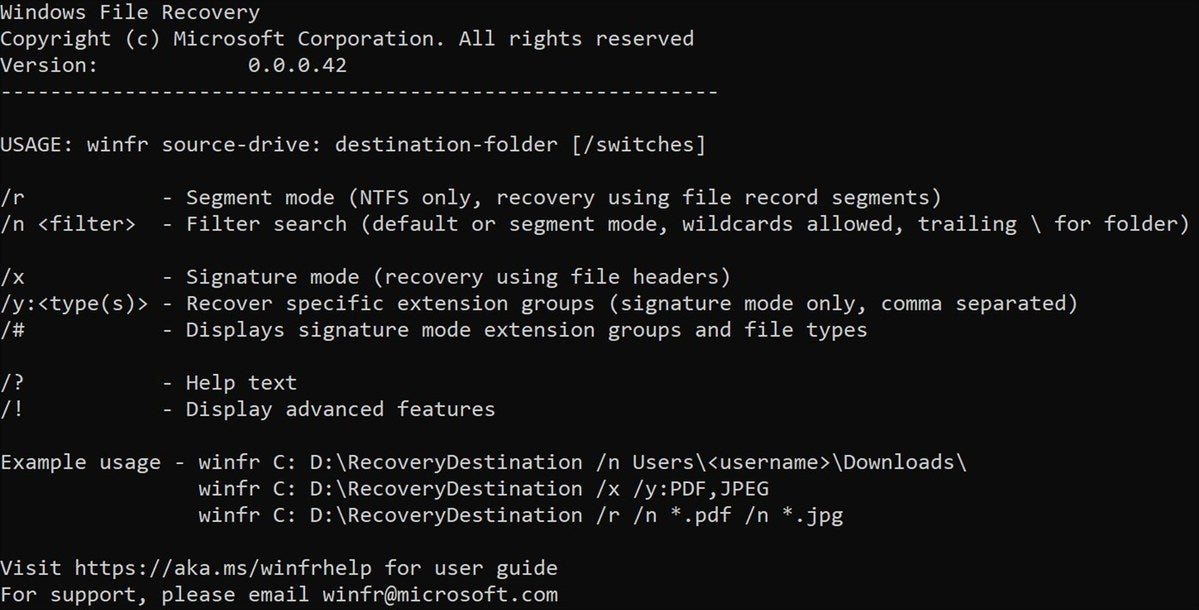
Accidentally deleting a file can be a nightmare. A new Windows 10 recovery tool, Windows File Recovery, can help, though it’s geared toward those who don’t mind using a command-line interface.
Windows File Recovery, a free application from Microsoft now in the Windows Store, offers a way to restore files that have been accidentally deleted. However, it requires Windows 10 build 19041 or higher, and it also does not work on a file that has been stored in the cloud. You will also need two separate drives, which can be as simple as a USB drive if you are trying to recover a file from the boot disk.
The app is essentially a command line interface disguised as an app, so retrieving a file is strictly a text-based matter. Microsoft automatically creates a recovery folder for you called Recovery_
winfr source-drive: destination-drive: [/switches]Microsoft provides some additional examples. For example, here we show you how to recover JPEG and PNG photos from your Pictures folder to the recovery folder on an E: drive.
winfr C: E: /n Users\Pictures*.JPEG /n Users\Pictures*.PNGThose examples use what Microsoft calls the default mode for the Windows file recovery interface. There are two others: segment mode and signature mode. The default mode uses the Master File Table (MFT) to locate missing files. (The MFT stores the information required to retrieve files from an NTFS partition.) If the MFT is missing or corrupted, you can use Segment mode, which requires segments: summaries of the file information that NTFS stores in the MFT, such as name, date, size, type, and pool / allocation unit index. Signature mode searches for file types. as .PDF or PNG files. If you are looking for an external drive, you can only use Signature mode, says Microsoft.
If you have lost a file, Microsoft specifically recommends no using your PC until the Windows file recovery utility can be run. “In the Windows file system, the space used by a deleted file is marked as free space, which means that the file data can exist and be recovered. But any use of your computer can create files, which can overwrite this free space at any time, “Microsoft said in a list of frequently asked questions about the MFR application.